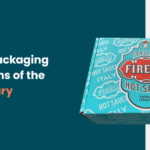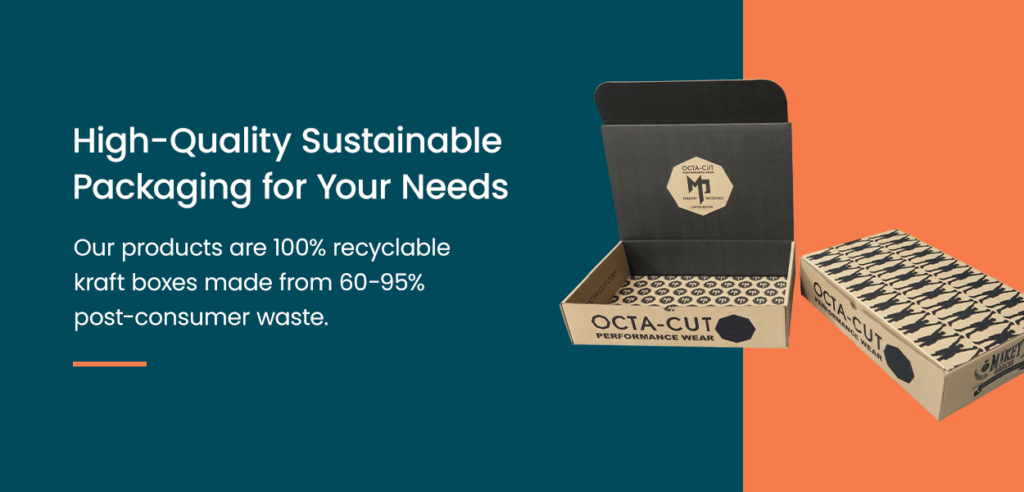
The packaging industry and its technology continue to evolve through the 21st century, making these products much more than just cardboard and plastic. Each of these packaging innovation examples is created to attract customers and add value to a product conventionally viewed as disposable.
These days, companies are looking for sustainable materials, new manufacturing methods and other end-of-life alternatives for packaging their products in an environmentally responsible way — something consumers are highly interested in. As a result, we’ve seen less plastic and more biomaterials in the industry and products that optimize the customer experience, providing cost-effective, easy-to-open packaging.
Keep reading to learn more about the past 22 years of innovations in the packaging industry.
Today’s packaging innovations build upon past methods to optimize the design and reduce waste. Many companies aim to use lightweight techniques and reduce raw materials in their packaging. This might involve altering configurations or replacing plastic with renewable materials like talc and calcium carbonate. At the same time, companies must ensure their lightweight products don’t reduce the item’s functionality, which is essential for food service operators.
Here are a couple of examples. In 2019, Diageo, the manufacturer of Guinness, announced it’d be replacing plastic beer packaging with 100% biodegradable or recyclable cardboard. The company also invested $21 million to remove plastic ring four- and six-pack holders and shrink-wrapping. Further, Unilever, a company on the top list of polluters, aims to eliminate unnecessary or problematic plastic packaging and make 100% of its plastic packaging reusable, compostable or recyclable by 2025.
Over the last 22 years, e-commerce has become dominant in the retail marketplace. Amazon is one of the most significant presences in the sector’s growth and its customer-focused ethos is the primary factor behind that success.
The company launched Frustration-Free Packaging (FFP) in 2008 to make the customer experience as smooth as possible. Made from 100% recyclable materials, the products from the program were designed to be easy to open and ship in less packaging to eliminate waste. Just one of the many packaging innovation examples in the last 22 years, Amazon also ensures its products are protective, cost-effective and easy for customers to select at checkout.
One of the most exciting packaging innovation examples in the last 22 years includes heat-anywhere containers. The packaging created by Inductive Intelligence takes customer satisfaction a step further with technology that makes it possible to heat containers on the go. These containers blend food and beverage packaging with wireless software, charging, tags and sensors.
By combining two significant trends — single-serve packaging and Apple Qi wireless charging devices — companies can deliver a customer experience that’s convenient, safe, consistent and sustainable. To communicate with wireless charging devices, the heating technology uses metal and data expressed in radio-frequency identification (RFID) or Near Field Communication (NFC) tags. This way, they can express precisely how to heat the product as it’s transported from place to place.
At the same time, the package can also communicate with the device on how well it’s heating. It works for flexible foil packages, cans, paper, glass and plastic. Venting depends on the product, with veggies and other items needing more than others. The device takes time and guesswork out of heating pre-packaged items. It’s more precise and ensures all products are heated to their specific manufacturer recommendations.
A significant goal in the packing industry in the last 22 years has been to make everything more sustainable. This has come in several forms, from the recyclability of materials to lightweight products.
One of the most unique developments comes from Notpla, which produces edible packaging. Designed in 2013, the Ooho packaging is made from seaweed and plants intended for beverages like water and juices. The liquid inside is sealed by a seaweed coating, made from a mix of calcium chloride and sodium alginate found in algae. While it’s designed to be eaten during or after its use, the company claims it takes six weeks to degrade.
In 2019, the drink company Lucozade Sport collaborated with Notpla for the London Marathon to provide Ooho drinks for runners. Notpla has also partnered with the delivery food business JustEat, developing sustainable water and grease-proof liners for cardboard boxes made from oil or corn.
Over the years, new packaging innovations have been designed to make it difficult for young children to get into harmful products. This child-resistant packaging includes locking closures and blister packaging for tablets, with products in many shapes and sizes.
Burgopak, a packaging design and development company, brought its “pop” opening design to the market. Users push in two tabs to pull out a tray from the box to open the packaging. Users can then lock the packaging by pushing the tray back into the box, with the tabs creating a locking mechanism.
Burgopak’s packaging is intended for items like vape cartridges, medicines and health-related products such as syringes. In 2019, the firm’s device won a packaging award for Theory Wellness’s legalized cannabis range. Burgopak’s device is certified by the U.S. Code of Federal Regulations as child-resistant, effective and unable to be opened by children ages 49 to 51 months over two-minute periods.

Bioplastics, derived from renewable biomass sources like corn starch, vegetable fats and agricultural byproducts, are increasingly popular creations in the packaging industry. Certain food and drink brands, like Coca-Cola, PepsiCo, Heinz and Nestlé, and packaging manufacturers like Tetra Pak, have all launched or integrated these products into their portfolios.
Ecover, a company that manufactures eco-friendly cleaning products, has developed PlantPlastic packaging, made from plastic derived from 75% sugarcane and 25% recycled plastic. Evocative, another brand focused on sustainable packaging solutions, has designed packaging made out of 100% pure mycelium structure, the root structure of mushrooms, to bind organic agricultural byproducts. The goal is to produce robust, bio-based and 100% compostable materials to replace plastics and reduce waste.
Many companies in the packaging industry understand that reducing the environmental impact of packaging means recognizing how the raw materials are manufactured and transported and how they’re disposed of. Some have implemented an approach that ensures their products contain materials that can be reused or recovered multiple times after first use.
For example, Amcor uses an in-house tool to assess and accurately calculate the environmental impact of various container types and designs throughout their life cycles. This way, they can commercialize new packaging innovations that prioritize sustainability.
Bolt Boxes uses new packaging innovations that are sustainable and customer-focused. Our custom product containers allow you to choose from sustainable options with capabilities that help you follow the best trends in the market.
We stand among the best in the packaging industry with excellent lead times, print capabilities, pre-press expertise and structural design experience all under one roof. Our products are 100% recyclable kraft boxes made from 60-95% post-consumer waste.
Contact us for a quote today.
